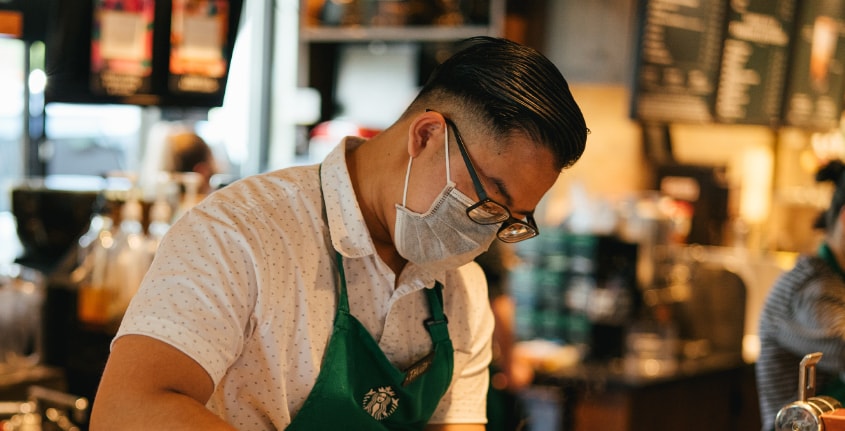Whatever their phased-reopening plans look like, the governments across the globe that are managing the restart of economic activity in the wake of COVID-19 have generally been in consensus on one point: The final phase, full resumption of economic and social activity, will not happen until a COVID-19 vaccine is widely accessible.
With that stage unlikely to be reached before mid-2021 at the earliest, businesses have had to figure out how to create comfortable experiences for customers and workers while public-health regulations on social distancing and mask-wearing are still in place. In the Netherlands, McDonald’s planned to welcome guests back into its restaurants with table service—delivering orders to customers’ tables via trolleys from which they could pick up their food. The company also announced plans for handwashing stations at restaurant entrances and a “Take Out Plus” contactless ordering experience for pedestrians and cyclists who cannot use the drive-thru but do not want to dine indoors. Employees are to be spaced apart in 1.5-meter intervals with plastic partitions between them as necessary.
In the first three weeks of April 2020, order-online, pick-up-at-store orders climbed 208% year-over-year at 80 leading retailers.
Source: Adobe Analytics
To give some peace of mind to flyers as air travel slowly resumes, carriers including Delta Air Lines and American Airlines announced moves to block off some middle seats on their planes. Air Canada and Frontier in May became the
first North American airlines to roll out preboarding temperature checks for passengers.
Starbucks, acutely aware of its position as a “third place”—a sought-out destination away from work and home for customers—reopened the vast majority of its U.S. stores in May, incorporating lessons learned from its reopened stores in China. The coffee giant expanded mobile ordering and contactless pickup and debuted curbside pickup in some locations. Indeed, the rise of order-online, pick-up-at-store options may be one of the biggest retail trends to emerge from the COVID-19 pandemic.
In the first three weeks of April, according to data from Adobe Analytics, these orders climbed 208% year-over-year at the 80 leading retailers the company tracks. For consumers, curbside pickup options are compelling on several fronts: no shipping fees, the convenience of being able to get items the same day they are ordered, peace of mind from minimized exposure to other shoppers and associates—and still an opportunity to get out of the house.
Coming out of isolation, customers “crave the connection and community that are fundamental to humanity,” Starbucks CEO Kevin Johnson wrote in a letter to customers and partners. However, he noted, they also want retail experiences that feel safe, familiar and convenient. Responding to evolving customer expectations and developing new adaptations and routines alongside customers will help forge a new, robust future for the “third place,” he indicated.
This article appeared in the Summer 2020 issue of IQ Insigniam Quarterly, with the headline “Forging a New Future.” To begin receiving IQ, go here.






